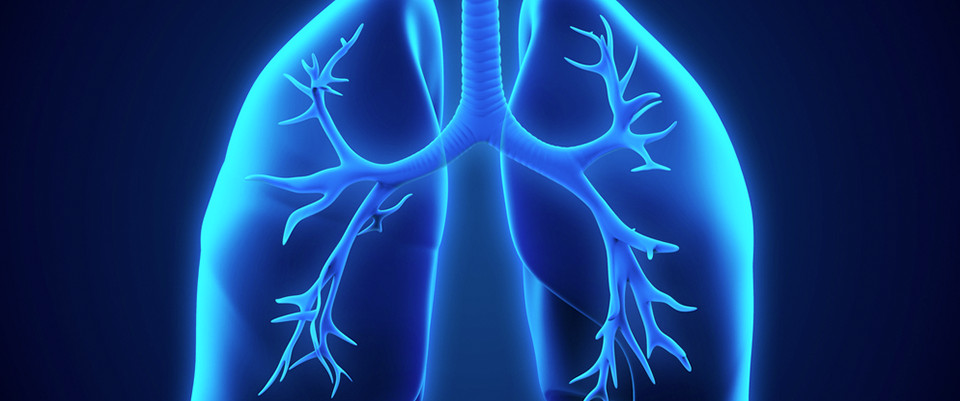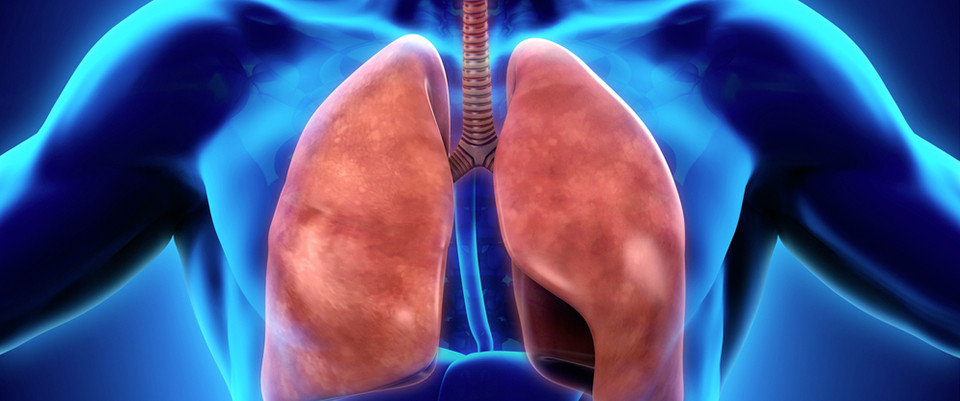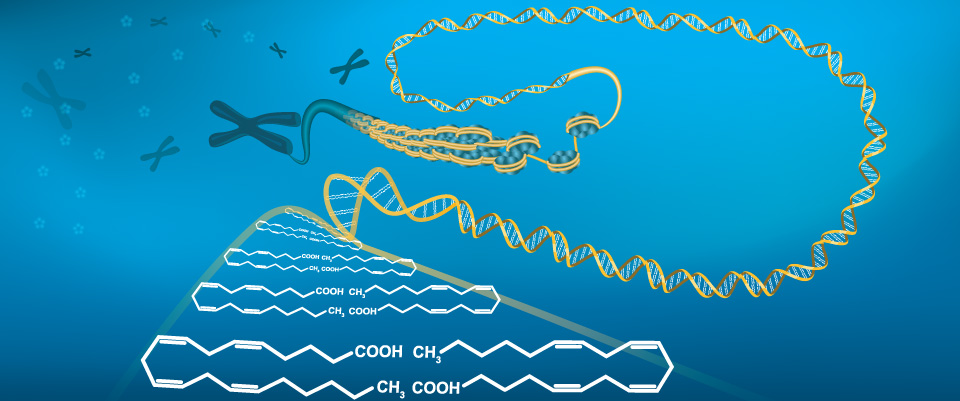PubMed
Identification and characterization of two hydrolase genes involved in the hydrolysis of galloylated catechin in the tea plant Camellia sinensis
Int J Biol Macromol. 2025 Apr 2:142620. doi: 10.1016/j.ijbiomac.2025.142620. Online ahead of print.ABSTRACTGalloylated catechins are major catechins in tea, resulting in a bitter and astringent taste. In this study, to identify the key genes involved in the hydrolysis of astringency-associated galloylated catechins in Camellia sinensis, multiomics association analysis, including enzyme activity assays, transcriptomics, and metabolomics, was performed. Subsequently, seven candidate genes involved in the hydrolysis of galloylated catechin were screened from tea genomes using correlation analysis. Phylogenetic analysis revealed that these genes were clustered into caffeoyl shikimate esterase, acetate esterase, and tannase groups. In vitro, the purified recombinant enzymes rCSS0031888 and rCSS0049322 catalyzed the hydrolysis of galloylated catechins into nongalloylated catechins. This study provides an efficient method for mining functional genes and identifying key genes involved in the hydrolysis of galloylated catechins in vitro, thereby reducing the bitterness and astringency of tea and offering a molecular basis for cultivating high-quality tea varieties.PMID:40185441 | DOI:10.1016/j.ijbiomac.2025.142620
Hexosamine biosynthesis dysfunction-induced LIFR N-glycosylation deficiency exacerbates steatotic liver ischemia/reperfusion injury
Metabolism. 2025 Apr 2:156258. doi: 10.1016/j.metabol.2025.156258. Online ahead of print.ABSTRACTBACKGROUND: More and more steatotic livers undergo resection or transplantation but they exhibit higher susceptibility to ischemia-reperfusion injury (IRI), which results in increased perioperative complication morbidity and mortality. IRI is driven by various cytokines and receptors, both of which are extensively modified by N-glycosylation. We aim to elucidate susceptibility of steatotic livers to IRI from the perspective of N-glycosylation.METHODS: Differentially expressed genes and glycoproteins were identified with RNA-seq and N-glycoproteomics. Myeloid LIF or hepatocyte LIFR knockout mice were developed to examine the function of LIF and LIFR. Modalities including phosphoproteomics, ChIP-seq, single cell RNA-seq, metabolomics and immunoblotting were utilized to investigate underlying mechanisms.RESULTS: LIF transcription in myeloid cells and LIFR N-glycosylation in hepatocytes were substantially induced by IRI of normal livers. LIF and LIFR protected normal livers from IRI through activating STAT3 and promoting downstream TNFAIP3 expression, which was facilitated by LIFR N-glycosylation. Mechanistically, N-glycosylation at N238 stabilized LIFR protein by disrupting TRIM28-mediated K48 ubiquitination at LIFR K254. Furthermore, N-glycosylation at N358/N658/N675 of LIFR facilitated LIF/LIFR/gp130 complex formation and subsequent signal transduction. However, in steatotic livers, myeloid cell LIF transcription was partially inhibited due to hepatic microenvironment L-arginine insufficiency, while hepatocyte LIFR N-glycosylation was defective due to intracellular UDP-GlcNAc exhaustion. Importantly, combined L-arginine and GlcNAc treatment reversed LIF expression and LIFR N-glycosylation insufficiency, which represents potential therapeutic strategy to protect steatotic livers.CONCLUSIONS: LIF expression and LIFR N-glycosylation insufficiency aggravates steatotic liver IRI, which can be reversed by combined L-arginine and GlcNAc treatment.PMID:40185397 | DOI:10.1016/j.metabol.2025.156258
Follicular Fluid Profiling Unveils Anti-Müllerian Hormone alongside Glycolytic and Mitochondrial Dysfunction as Markers of Polycystic Ovary Syndrome
Mol Cell Endocrinol. 2025 Apr 2:112536. doi: 10.1016/j.mce.2025.112536. Online ahead of print.ABSTRACTPolycystic ovary syndrome (PCOS) is a prevalent endocrine disorder affecting women of reproductive age, yet the molecular mechanisms influencing its pathophysiology remain poorly defined. A comprehensive prospective case-control study was conducted to elucidate the follicular fluid (FF) hormone and metabolite profile in women with PCOS and its implications for oocyte maturation and fertilization. The study involved 40 age- and body mass index (BMI)-matched women undergoing in vitro fertilization (IVF), including 20 diagnosed with PCOS and 20 controls with infertility due to tubal or male factors. A distinctive hormone profile in the FF of women with PCOS was identified, characterized by significantly higher anti-Müllerian hormone (AMH) levels (24.90±17.61 vs. 16.68±17.67 pmol/L, p=0.0039) and lower progesterone (8253±4748 vs. 25362±10862 ng/mL, p<0.0001) and estradiol levels (388.23±210.58 vs. 651.48±390.79 ng/mL, p=0.0208) compared to normoovulatory controls. Moreover, a metabolite fingerprint associated with glycolytic and mitochondrial dysfunction was observed, as evidenced by lower lactate (4575.44±1507.76 vs. 5595.34±1073.32 μmol/L, p=0.0182) and formate (64.51±16.06 vs. 75.81±16.63 μmol/L, p=0.0351) levels and higher citrate levels (136.93±52.53 vs. 109.15±24.17 μmol/L, p=0.0409) in the FF of women with PCOS. These findings suggest that the molecular profile of the FF in women with PCOS is related to granulosa cell glycolytic and mitochondrial dysfunction, which can have a negative impact on oocyte fertilization potential. The study provides an integrative analysis of the FF hormone and metabolite profile in women with PCOS, offering insights into the molecular mechanisms underlying the reproductive dysfunctions associated with this condition.PMID:40185328 | DOI:10.1016/j.mce.2025.112536
The imidazoline I<sub>2</sub> receptor agonist 2-BFI enhances cytotoxic activity of hydroxychloroquine by modulating oxidative stress , energy-related metabolism and autophagic influx in human colorectal adenocarcinoma cell lines
Eur J Pharmacol. 2025 Apr 2:177590. doi: 10.1016/j.ejphar.2025.177590. Online ahead of print.ABSTRACTRecently, interest in imidazoline receptors (IRs) has been increasing. Over the years, a growing number of studies have highlighted the therapeutic potential of ligands targeting these receptors, however, the potential role of imidazoline I2 receptor agonists in cancer treatment has not been thoroughly investigated. Colorectal cancer (CRC) is among the most prevalent and lethal forms of cancer worldwide. The complexity of CRC necessitates individualized approaches. One promising area of research within CRC therapy is the regulation of autophagy. Recent studies have explored the relationship between autophagy and cancer progression, revealing that autophagy modulation could be a potential strategy for CRC treatment. However, the mechanisms underlying autophagy regulation remain poorly understood. This study aimed to evaluate the effect of the imidazoline I2 receptor agonist, namely 2-(2-benzofuranyl)-2-imidazoline hydrochloride (2-BFI), on colorectal cancer cells, HT-29 and HCT-116 cell lines, particularly its impact when co-incubated with the autophagy inhibitor, hydroxychloroquine (HCQ). The results showed that 2-BFI synergistically increased the cytotoxic effect of HCQ by inducing oxidative stress and apoptosis. Furthermore, our investigation indicated impairment autophagic influx in colon cancer cells treated by 2-BFI. The comprehensive metabolomic analysis revealed significant alterations in key metabolic pathways including MAO activity, oxidative stress responses, energy-related metabolites and amino acids metabolism. Altogether, these findings demonstrate potential a new therapeutic strategy based on autophagy regulation and the selective induction of oxidative stress in colorectal cancer cells. Moreover, this study provides a foundation for further investigation into the therapeutic potential of imidazoline receptor agonists in cancer therapy.PMID:40185322 | DOI:10.1016/j.ejphar.2025.177590
Association of Metal Mixtures during the Second Trimester with Gestational Hypothyroidism and its Mediation by Metabolites
Environ Res. 2025 Apr 2:121534. doi: 10.1016/j.envres.2025.121534. Online ahead of print.ABSTRACTExposure to metals has been linked to an increased risk of gestational hypothyroidism (GHT), but the combined effects of metal mixtures and the role of serum metabolites in this relationship remain poorly understood. Therefore, this study aimed to examine the associations between metal exposure and GHT risk and to explore the mediating role of serum metabolites. In a case-control study with 30 pairs of GHT patients and controls matched by age, gestational age, parity, and obesity status, we measured serum metabolites and whole blood metal levels using UPLC-MS/MS and ICP-MS, respectively. Conditional logistic regression was employed to assess the individual effects of metals on GHT risk, while Bayesian kernel machine regression (BKMR) and quantile g-computation evaluated the combined effects of metal co-exposure. Mediation analyses were conducted to investigate the role of serum metabolites in these associations. arsenic (As), chromium (Cr), nickel (Ni), and Selenium (Se) were significantly associated with increased GHT risk (ORs: Se = 1.62, Cr = 1.11, Ni = 1.14, As = 1.21). Joint exposure to As, Ni, and Se was positively associated with GHT risk. Mediation analyses revealed that free fatty acids (FFA, 18:5) mediated the associations of Ni and Se with GHT, explaining 31.33% and 49.16% of the associations, respectively. Our findings suggest that blood levels of As, Ni, and Se are associated with an increased risk of GHT, and that the Ni- and Se-GHT associations are mediated by FFA (18:5), providing insights into the mechanisms linking metal exposure, serum metabolites, and GHT risk.PMID:40185263 | DOI:10.1016/j.envres.2025.121534
Lead promoted bile acid deconjugation by modulating gut bacteria encoding bile salt hydrolase (BSH) in Rana chensinensis tadpoles
Environ Pollut. 2025 Apr 2:126187. doi: 10.1016/j.envpol.2025.126187. Online ahead of print.ABSTRACTBile salt hydrolase (BSH) is produced by gut bacteria and is responsible for deconjugating amino acids from the aliphatic side chains of conjugated bile acids (BAs), initiating the critical first step in BAs metabolism. Lead (Pb) is known to cause gut microbial dysbiosis, but whether it affects BAs profiles by reshaping the gut microbiota remains elusive. Here, using targeted BAs metabolomics and metagenomics sequencing, we found that 200 μg/L Pb treatment led to a significant increase in the abundance of BSH-producing microbiota (e.g., Eubacterium and Yersinia), thus promoting the deconjugation of taurocholic acid (TCA) and taurochenodeoxycholic acid (TCDCA). Consequently, the accumulation of relatively hydrophobic BAs cholic acid (CA) and chenodeoxycholic acid (CDCA) may cause damage to enterocytes (e.g., reduced microvilli and enterocyte heights), which attenuated tadpole digestion and ultimately led to significant reductions in morphological parameters. The inhibition of tadpole growth by Pb toxicity may negatively affect their survival and even increase their risk of death. Overall, these results revealed for the first time the toxicological mechanism by which Pb reshapes the gut microbiota and thus disrupts the BAs profile, shedding new insights into the detrimental effects of Pb toxicity on amphibian growth.PMID:40185186 | DOI:10.1016/j.envpol.2025.126187
Polyethylene biodegradation: A multifaceted approach
Biotechnol Adv. 2025 Apr 2:108577. doi: 10.1016/j.biotechadv.2025.108577. Online ahead of print.ABSTRACTThe inert nature, durability, low cost, and wide applicability of plastics have made this material indispensable in our lives. This dependency has resulted in a growing number of plastic items, of which a substantial part is disposed in landfills or dumped in the environment, thereby affecting terrestrial and aquatic ecosystems. Among plastic materials, polyolefins are the most abundant and are impervious to biodegradation, owing to the presence of strong CC and CH bonds. Nevertheless, naturally occurring biodegradation of polyolefins, albeit limited, has been reported. This observation has sparked research on microbial polyolefin degradation. More efficient and targeted versions of this process could be developed also in the laboratory by designing synthetic microbial consortia with engineered enzymes. In this review, we discuss strategies for the development of such microbial consortia and identification of novel polyolefin-degrading microorganisms, as well as the engineering of polyethylene-oxidizing enzymes with greater catalytic efficacy. Finally, different techniques for the design of synthetic microbial consortia capable of successful polyolefin bioremediation will be outlined.PMID:40185175 | DOI:10.1016/j.biotechadv.2025.108577
Integrated microbiome and metabolome analysis reveals that Zishen Qingre Lishi Huayu recipe regulates gut microbiota and butyrate metabolism to ameliorate polycystic ovary syndrome
Microb Pathog. 2025 Apr 2:107533. doi: 10.1016/j.micpath.2025.107533. Online ahead of print.ABSTRACTBACKGROUND: s: Polycystic ovary syndrome (PCOS) is a metabolic disorder disease strongly associated with gut microbiota (GM). Zishen Qingre Lishi Huayu recipe (ZQLHR), a traditional Chinese medicinal compound, has patented and shown therapeutic effects in treating PCOS in clinical trials without clear pharmacological mechanisms. This study aimed to disclose the potential therapeutic mechanism of ZQLHR on PCOS.METHODS: We firstly confirmed the therapeutic effects of ZQLHR treatment in PCOS patients. 16S rRNA sequencing, untargeted metabolomics, fecal microbiota transplantation (FMT), high performance liquid chromatography (HPLC) and Person's correlation analysis were conducted to elucidate the potential therapeutic mechanism.RESULTS: These results showed that PCOS symptoms in ZQLHR patients were significantly ameliorated. ZQLHR could increase the levels of butyrate-producing Lachnospira and Faecalibacterium and decrease the abundance of Escherichia-Shigella. Untargeted metabolomics showed that ZQLHR significantly improved host metabolic function, particularly butyrate metabolism and citrate cycle (TCA cycle) metabolism. The combined Faecalibacterium and butyrate metabolism datasets were correlated. Stool samples from ZQLHR patients could ameliorate ovarian architecture, significantly reduce testosterone (T), estradiol (E2) and luteinizing hormone (LH) levels and increased follicle-stimulating hormone (FSH) levels and increase the content of butyric acid in PCOS mice (P < 0.01). Moreover, the correlation analysis showed that some biochemical parameters (T, E2, LH levels and FSH) and butyric acid were correlated.CONCLUSION: We firstly depicted that ZQLHR could alleviate the series of symptom in women with PCOS by regulating gut microbiota and butyrate metabolism. This study provides a scientific basis and new ideas for the therapy of PCOS.PMID:40185172 | DOI:10.1016/j.micpath.2025.107533
Cannabis Consumption Conundrum: Weighing the Risks of Vaping and Smoking
Am J Physiol Lung Cell Mol Physiol. 2025 Apr 4. doi: 10.1152/ajplung.00111.2025. Online ahead of print.NO ABSTRACTPMID:40185106 | DOI:10.1152/ajplung.00111.2025
Gut microbiota and metabolites are linked to disease progression in multiple sclerosis
Cell Rep Med. 2025 Mar 27:102055. doi: 10.1016/j.xcrm.2025.102055. Online ahead of print.ABSTRACTProgressive multiple sclerosis (MS) is a neurological disease with limited understanding of the biology associated with transition from relapsing to progressive disease. Intestinal microbes and metabolites are altered in MS, but relation to disease progression is largely unknown. We investigate microbiota and metabolites in subjects with stable MS, those who worsened, and in those with relapsing MS who became progressive over 2 years. We find that Eubacterium hallii, Butyricoccaceae, Blautia, and other short-chain fatty-acid-producing microbes have beneficial associations with worsening of disability, 3T magnetic resonance imaging (MRI) measures, cognition, and quality of life, while Alistipes is detrimentally associated. Global metabolomics identified serum and stool metabolites that are altered in progressive MS and in relapsing subjects who transitioned to progressive disease. Most fecal metabolites associated with disease progression are decreased, suggesting a deficiency of protective factors in the gut. Using a unique MS cohort, our findings identify gut microbiome and metabolite pathways influencing progressive MS.PMID:40185103 | DOI:10.1016/j.xcrm.2025.102055
PM<sub>2.5</sub> exacerbates nasal epithelial barrier damage in allergic rhinitis mice: A crosstalk between gut microbiota and NLRP3 inflammsome
Ecotoxicol Environ Saf. 2025 Apr 3;295:118140. doi: 10.1016/j.ecoenv.2025.118140. Online ahead of print.ABSTRACTNumerous studies have demonstrated a positive correlation between the frequency and severity of allergic rhinitis (AR) with fine particulate matter (PM2.5) exposure, although the exact mechanisms remain poorly understood. This study aimed to investigate the role of gut microbiota disorder and NLRP3 pathway activation in PM2.5-induced nasal epithelial barrier damage in AR mice. The results indicated that PM2.5 could exacerbate rhinitis symptoms and epithelial barrier damage in nasal mucosa. The NLRP3 pathway-related proteins including NLRP3, Caspase-1, GSDMD, and IL-1β were elevated. Additionally, nasal mucosa injury was significantly worsen in AR mice with gut microbiota disorder. Gut Microbiomic studies indicated the Ileibacterium and Alistipes are associated with nasal injury exacerbation. Metabolomic analysis suggested that bile acid metabolism disorder is a potential contributor to aggravate nasal mucosa damage. The correlation analysis revealed that IL-1β was positively associated with Alistipes, Ileibacterium, cholic acid and PC (15:0/15:0). Alistipes was positively correlated with LPE18:2 and negatively correlated with zonula occludens-1 (ZO-1) and Claudin-1 proteins. In summary, gut microbiota disorder may cause abnormal bile acid metabolism and NLRP3 inflammasome activation, which participate in PM2.5 exposure-induced exacerbation of epithelial barrier damage in nasal mucosa. This study supplied a new insight and potential targets for prevention and treatment of AR.PMID:40185032 | DOI:10.1016/j.ecoenv.2025.118140
Effects of hydrothermal treatment and low pH on the fermentation characteristics of polysaccharides based water-soluble Maitake with Lactobacillus acidophilus and L. plantarum
Food Chem. 2025 Mar 22;481:143933. doi: 10.1016/j.foodchem.2025.143933. Online ahead of print.ABSTRACTMaitake (Grifola frondosa) is rich in bioactive polysaccharides and is known for its health benefits. This study investigated the effects of hydrothermal treatment (HT) and low pH conditions on Maitake, revealing their effectiveness in the bioactive polysaccharide extraction and metabolite bioavailability. HT and low pH-induced significant structural changes, with WSP-HT1 showing 99.67 % degradation and yielding 41.46 % β-glucan and 0.43 % α-glucan. Sodium Dodecyl Sulfate-Polyacrylamide Gel Electrophoresis demonstrated 45-10 kDa protein transformations, supported by molecular docking and dynamic simulations. FT-IR spectroscopy revealed carbohydrate spectral shifts and increased α-helix random coil association. Treated samples (WSP-LA-pH1, WSP-LA-pH4, WSP-LP-pH1, WSP-LP-pH4) exhibited enhanced optical density, antioxidant activity, fluorescence, and decried surface hydrophobicity. The metabolomic analysis highlighted significant pathway alterations, validated by Principal Component, Partial Least Squares Discriminant, Variable Importance in Projection, and Kyoto Encyclopedia of Genes and Genomes analysis. These findings confirm that hydrothermal treatment and low pH effectively extract active substances, enriching Maitake's medicinal properties.PMID:40184926 | DOI:10.1016/j.foodchem.2025.143933
Analysis of intrinsic effects of compound curing agents on small molecule metabolites and microbial communities in Xuanwei ham based on metabolomics and high-throughput sequencing
Meat Sci. 2025 Apr 2;225:109820. doi: 10.1016/j.meatsci.2025.109820. Online ahead of print.ABSTRACTIn order to reduce the salt content of Xuanwei ham and prevent the fading of the ham section, 18 hind legs of local black pigs were selected. The groups were cured with 6 % salt, 6 % compound curing agent I, and 6 % compound curing agent II, respectively. The differences in small molecule metabolites and microbial communities in Xuanwei ham among the groups were analyzed. The results showed that the compound curing agents promoted the release of many small molecule metabolites. The use of sugar led to the down-regulation of small molecule metabolites such as biogenic amines. Bacteria is the main cause of changes in small molecule metabolites of Xuanwei ham. Aspergillus potentially affect amino acid regulation, Yamadazyma and Debaryomyces promote lipid metabolism, and Staphylococcus promotes lipid oxidation and production of volatile compounds. These findings indicate that the compound curing agents affects small molecule metabolites and microbial communities in Xuamwei ham.PMID:40184916 | DOI:10.1016/j.meatsci.2025.109820
Plasma and urine metabolomics for the identification of diagnostic biomarkers for sulfur mustard-induced lung injury
Int Immunopharmacol. 2025 Apr 3;154:114515. doi: 10.1016/j.intimp.2025.114515. Online ahead of print.ABSTRACTBACKGROUND: Sulfur mustard (SM) is a highly lethal chemical warfare agent that induces severe health complications in exposed individuals. Gaining insights into the metabolic changes caused by SM exposure is essential for understanding its underlying mechanisms and developing effective diagnostic and therapeutic interventions.METHODS: In this investigation, we utilized proton nuclear magnetic resonance (H-NMR) spectroscopy to conduct metabolomic analysis in patients diagnosed with mustard lung disease (MLD) using a non-targeted approach. Metabolite measurements were conducted on plasma and urine samples collected from a total of 54 individuals, including 20 individuals with mild MLD, 20 individuals with moderate MLD, and 14 healthy individuals. Multivariate and univariate analyses were applied to identify metabolites that distinguish between the different groups, and enrichment analysis was performed to unveil the underlying biochemical pathways involved.RESULTS: The obtained metabolic profile had the potential to differentiate moderate from healthy plasma, but not from mild patients using multivariate analysis. Sixteen metabolites from plasma were considered significantly different between the moderate and control groups (VIP > 1 and p < 0.05) that these metabolites involved in fatty acid and amino acid metabolism. Utilizing all 16 metabolites as a combined panel, we were able to distinguish between the moderate and control groups, achieving an area under the curve (AUC) of 0.854. Moreover, 6 and 8 urinary metabolites were detected between mild vs. control and moderate vs. control groups, respectively. Fourteen metabolites exhibited significant fold changes (FC) (FC < 0.66 or FC > 1.5; p < 0.05). These metabolites are involved in amino acid and nicotinate metabolism.CONCLUSION: Our study provides novel insights into the metabolic changes associated with MLD and highlights potential pathways involved in the disease progression. These findings have implications for the development of targeted diagnostic and therapeutic strategies for MLD.PMID:40184812 | DOI:10.1016/j.intimp.2025.114515
Metabolomics analysis of osmotic tolerance enhancement mechanism of wheat gluten peptides on industrial yeast
Food Chem. 2025 Mar 28;482:144092. doi: 10.1016/j.foodchem.2025.144092. Online ahead of print.ABSTRACTPlant-derived wheat gluten peptides have an effective protective ability on industrial yeast against osmotic stress, the enhancement mechanism of osmotic tolerance in yeast by wheat gluten peptides addition was clarified in this study. Results showed that wheat gluten peptides addition increased the intracellular pH and trehalose levels of yeast under osmotic stress, compared to the control. Furthermore, peptides supplementation could regulate the antioxidant defense system and reduce the reactive oxygen species accumulation in yeast, including the increase of intracellular glutathione levels and the activities of antioxidant enzymes catalase and glutathione peroxidase. Metabolomic results indicated that the enhancement mechanism of wheat gluten peptides on yeast osmotic tolerance was related to the promotion of arginine and proline metabolism, pantothenate and coenzyme A biosynthesis, pyrimidine metabolism, and cysteine and methionine metabolism pathways. These results provide new insight into the enhancement mechanism of yeast stress tolerance by plant-derived peptides from a metabolic perspective.PMID:40184741 | DOI:10.1016/j.foodchem.2025.144092
Investigation into the effects of acute heat stress on stress level, meat quality, myofibrillar proteins properties and serum metabolites release of Muscovy ducks (Cairina moschata)
Food Chem. 2025 Mar 28;482:144104. doi: 10.1016/j.foodchem.2025.144104. Online ahead of print.ABSTRACTThis study systematically investigated the effects of acute heat stress (AHS) on Muscovy ducks, focusing on plasma stress indicators, meat quality, myofibrillar proteins (MPs) properties, and serum metabolite profiles. AHS significantly elevated stress level, impairing meat quality, as evidenced by higher L* value, shear force, drip loss, and cooking loss (P < 0.05). It also induced MPs oxidation and aggregation, reflected by elevated carbonyl content, turbidity, zeta potential, and particle size. MPs structural alterations were confirmed by fluorescence quenching and increased exposure of hydrophobic groups. Correlation analysis revealed strong associations between physicochemical changes and MPs oxidation. Metabolomic analysis identified 161 and 105 differential metabolites in the CON vs. LS and CON vs. SS comparisons, respectively, involving 25 metabolic pathways related to energy, amino acids, and fatty acids. These findings provide novel insights into the molecular pathways of AHS-induced meat quality deterioration and reveal potential intervention timing for the poultry industry.PMID:40184737 | DOI:10.1016/j.foodchem.2025.144104
Corrigendum to "Integrating serum pharmacochemistry, network pharmacology, and metabolomics to elucidate the detoxification and effect-adjusting mechanism of Chebulae Fructus-processing on Mongolian medicine Euphorbia pekinensis"[J. Ethnopharmacol. 345...
J Ethnopharmacol. 2025 Apr 3;346:119716. doi: 10.1016/j.jep.2025.119716. Online ahead of print.NO ABSTRACTPMID:40184715 | DOI:10.1016/j.jep.2025.119716
Alterations in fatty acid metabolism in patients with schizophrenia in a multi-omics perspective
Schizophr Res. 2025 Apr 3;279:94-105. doi: 10.1016/j.schres.2025.03.036. Online ahead of print.ABSTRACTBACKGROUND: Recent research has extensively explored the involvement of gut microbes in various fatty acid metabolic processes, elucidating their crucial roles in host energy homeostasis and metabolism. Nevertheless, there remains a dearth of studies examining the comprehensive profile of fatty acid metabolites in schizophrenia and their potential connection to gut microbes.METHOD: Conducting a thorough investigation, this study scrutinized the gut microbiome composition of 63 individuals, consisting of 35 schizophrenia (SZ) patients and 28 demographically matched healthy control (HC) subjects. Feces and serum samples were meticulously collected, with stool samples subjected to 16S rRNA sequencing targeting region V4 and untargeted metabolomics analysis, while serum samples underwent untargeted metabolomics assessment.RESULTS: A total of 21 different genus-level species were identified in the SZ and HC groups. Predictive analysis of gut flora pathways revealed abnormal fatty acid degradation in schizophrenia. Notably, 17 differential fatty acid metabolites were found in feces, whereas 43 were found in serum fatty acid metabolites. A higher proportion of differential fatty acid metabolites were found in serum compared to those in feces. The predominant pathways enriched in fatty acid metabolites included biosynthesis of unsaturated fatty acids, arachidonic acid metabolism, and linoleic acid metabolism. Additionally, a significant correlation was noted between intestinal flora and fatty acids, as well as potential interactions between intestinal flora, fecal fatty acids and serum fatty acids.CONCLUSIONS: Our multi-omics study provides new insights into the pathogenesis of schizophrenia, which may inform the treatment of neurodevelopmental disorders by modifying fatty acid metabolism through modulation of the gut microbiota.PMID:40184646 | DOI:10.1016/j.schres.2025.03.036
Cardiac Slc25a49-Mediated Energy Reprogramming Governs Doxorubicin-Induced Cardiomyopathy through the G6P-AP-1-Sln Axis
Adv Sci (Weinh). 2025 Apr 4:e2502163. doi: 10.1002/advs.202502163. Online ahead of print.ABSTRACTDoxorubicin (Dox), a potent antitumor drug, is linked to cardiac toxicity. Few mechanism-based therapies against cardiotoxicity are available. Dysfunction in mitochondrial energy metabolism contributes to Dox-induced cardiomyopathy. It is aimed at exploring the association between specific mechanism of energy reprogramming and Dox-induced cardiomyopathy. Cardiac-specific ablation of Slc25a49 mice are generated by crossing Slc25a49flox/flox mice with Myh6-Cre mice. Slc25a49HKO mice or SLC25A49KD cardiomyocytes is treated with Dox. Echocardiography, histological analysis, transmission electron microscopy, bulk RNA sequencing, cell bioenergetic profiling, metabolomics test, chromatin immunoprecipitation, and dual-luciferase reporter assay are conducted to delineate the phenotype and elucidate the molecular mechanisms. Specific ablation of Slc25a49 in cardiomyocytes leads to exacerbated Dox-induced cardiomyopathy, characterized by compromised mitochondrial respiration enhanced glycolysis and increased glycolytic metabolite glucose-6-phosphate (G6P) levels, subsequently activating the activator protein-1 (AP-1) complex. The stimulation of the G6P-AP-1 axis intensifies myocardial damage via transcriptionally regulating Sarcolipin (Sln) expression. Strikingly, targeting of this axis with the AP-1 inhibitor T-5224 effectively improves survival and enhances cardiac function in Dox-induced cardiomyopathy. This study provides mechanistic insights into energy reprogramming that permits myocardial dysfunction, and thus provides a proof of concept for antienergy reprogramming therapy for Dox-induced cardiomyopathy through directly modulating G6P-AP-1-Sln axis.PMID:40184586 | DOI:10.1002/advs.202502163
Development of a Single-Cell Spatial Metabolomics Method for the Characterization of Cell-Cell Metabolic Interactions
Anal Chem. 2025 Apr 4. doi: 10.1021/acs.analchem.5c00384. Online ahead of print.ABSTRACTTumor microenvironment (TME) is characterized by complex cellular composition and high molecular heterogeneity. Characterizing the metabolic interactions between different cells in the TME is important for understanding the molecular signatures of tumors and identifying potential metabolic vulnerabilities for tumor treatment. In this research, we develop a single-cell spatial metabolomics method to profile cell-specific metabolic signatures and cell-cell metabolic interactions using matrix-assisted laser desorption/ionization mass spectrometry imaging (MALDI-MSI). Different low-molecular-weight metabolites and lipids including glutamate, aspartate, glutamine, taurine, phenylalanine, glutathione, fatty acids, phospholipids, etc. were successfully detected and imaged after optimizing cell culture conductive slides, cell washing, and fixation procedures. Subsequently, we carried out single-cell spatial metabolomics on H460 large-cell lung cancer cells, HT-29 colorectal cancer cells, A549 lung cancer cells, HUH-7 liver cancer cells, and cancer-fibroblasts coculture system. We revealed that the metabolic profiles of both cancer cells and fibroblasts were altered after cell coculture. Glutamate and aspartate significantly increased in fibroblasts after coculture with cancer cells, corresponding to their indispensable roles in the creation of pro-cancer microenvironment. In addition, we discovered that the expressions of fatty acids and phospholipids in tumor cells and fibroblasts were also changed after cell coculture, which is closely related to the competition for energy and nutrient metabolites between different cells. We anticipate this single-cell analysis method to be broadly used in the investigations of diverse cellular models and cell-cell metabolic interactions.PMID:40184576 | DOI:10.1021/acs.analchem.5c00384











